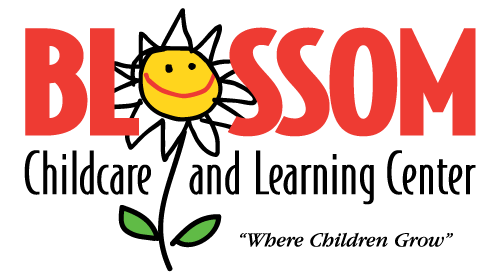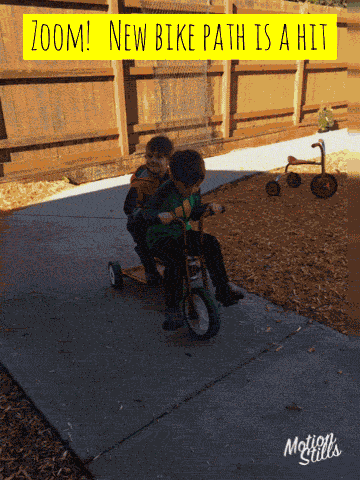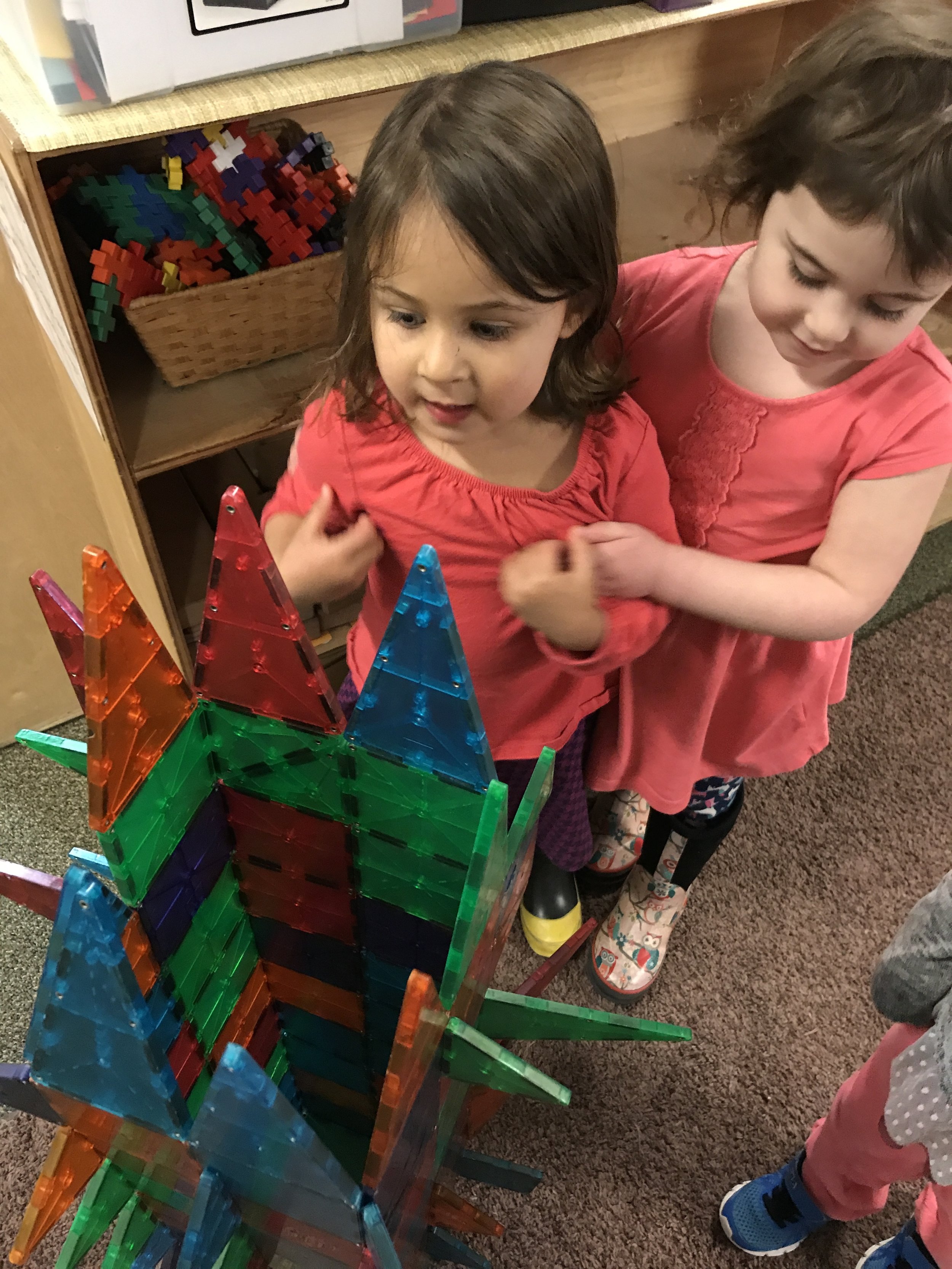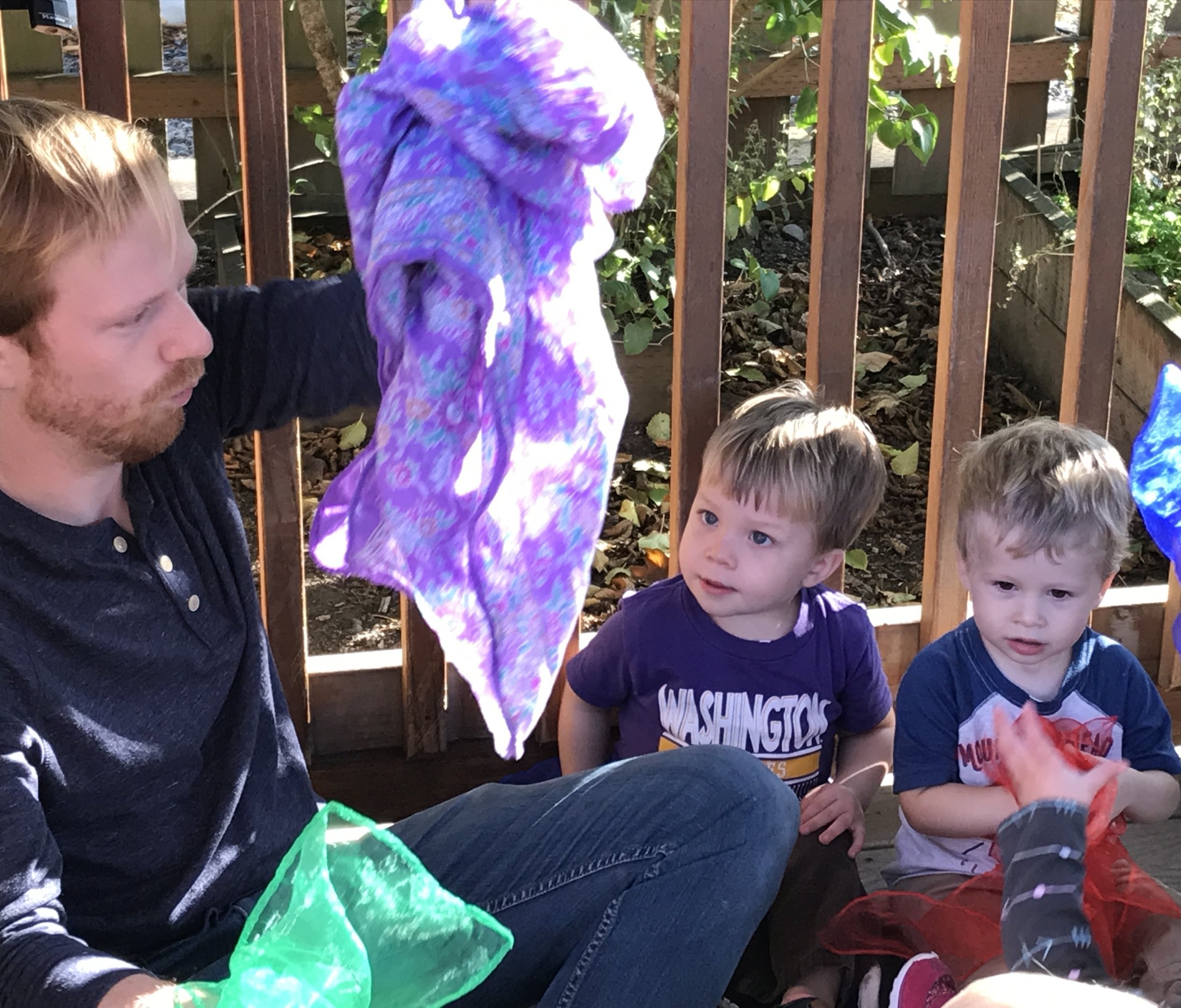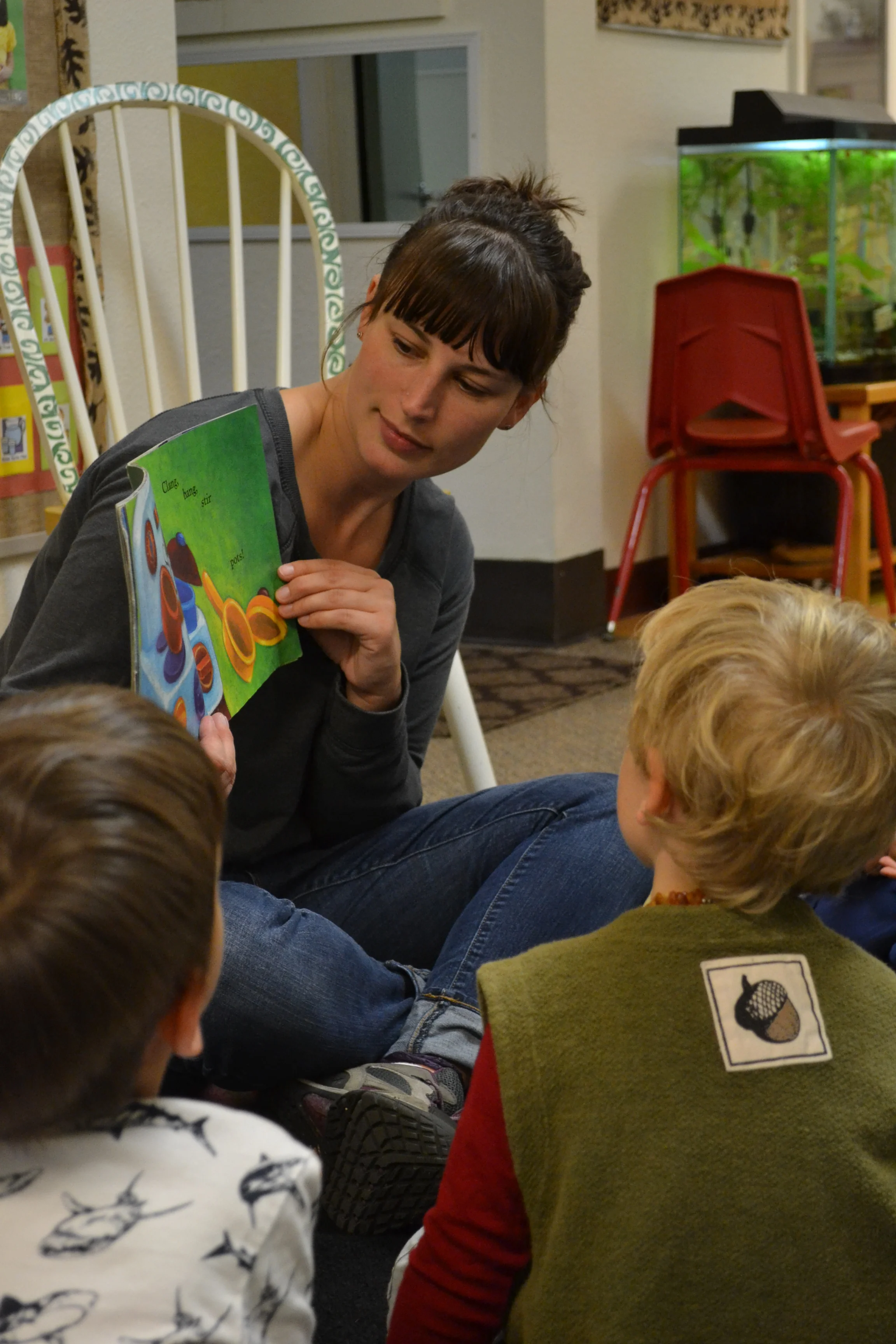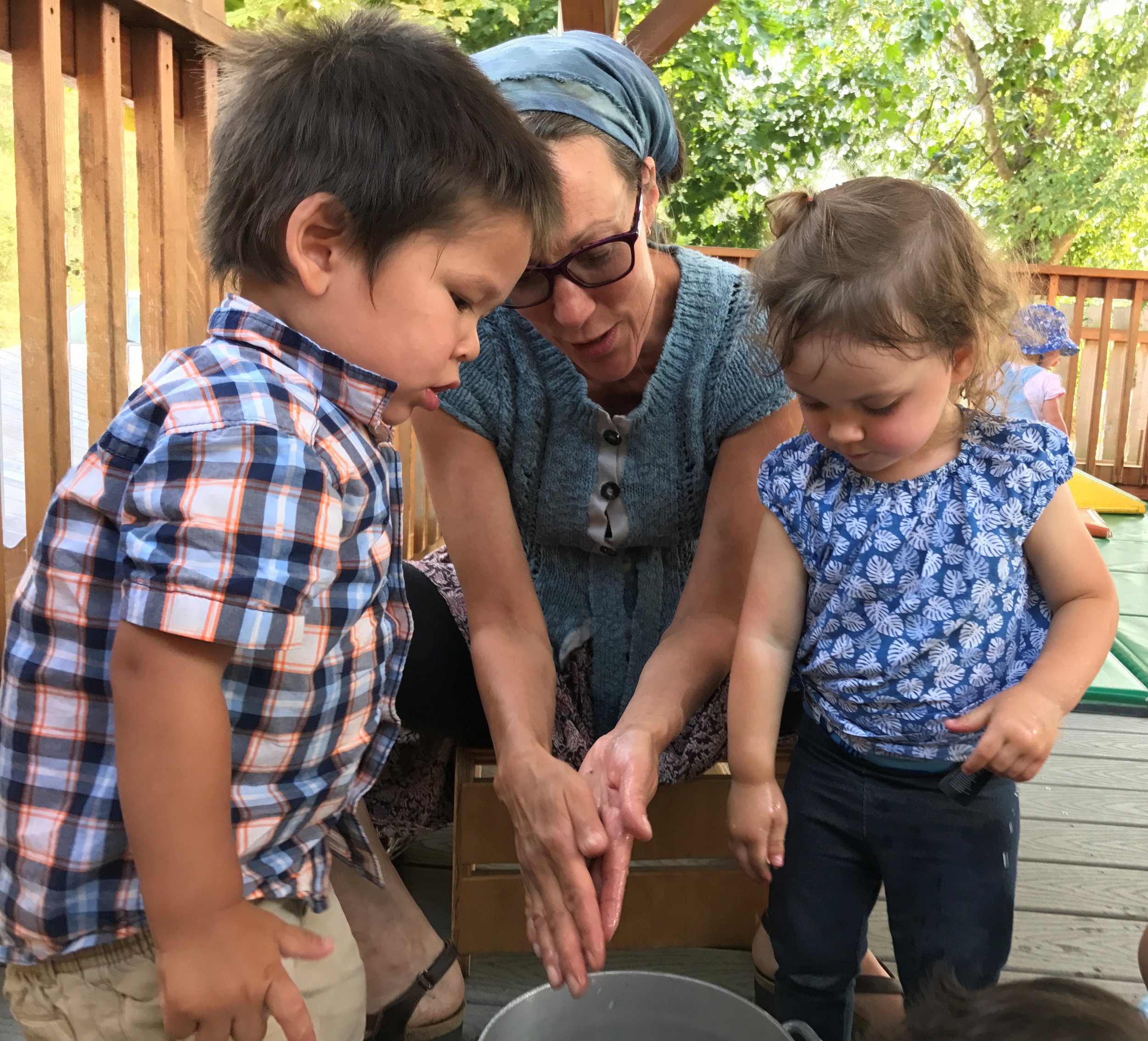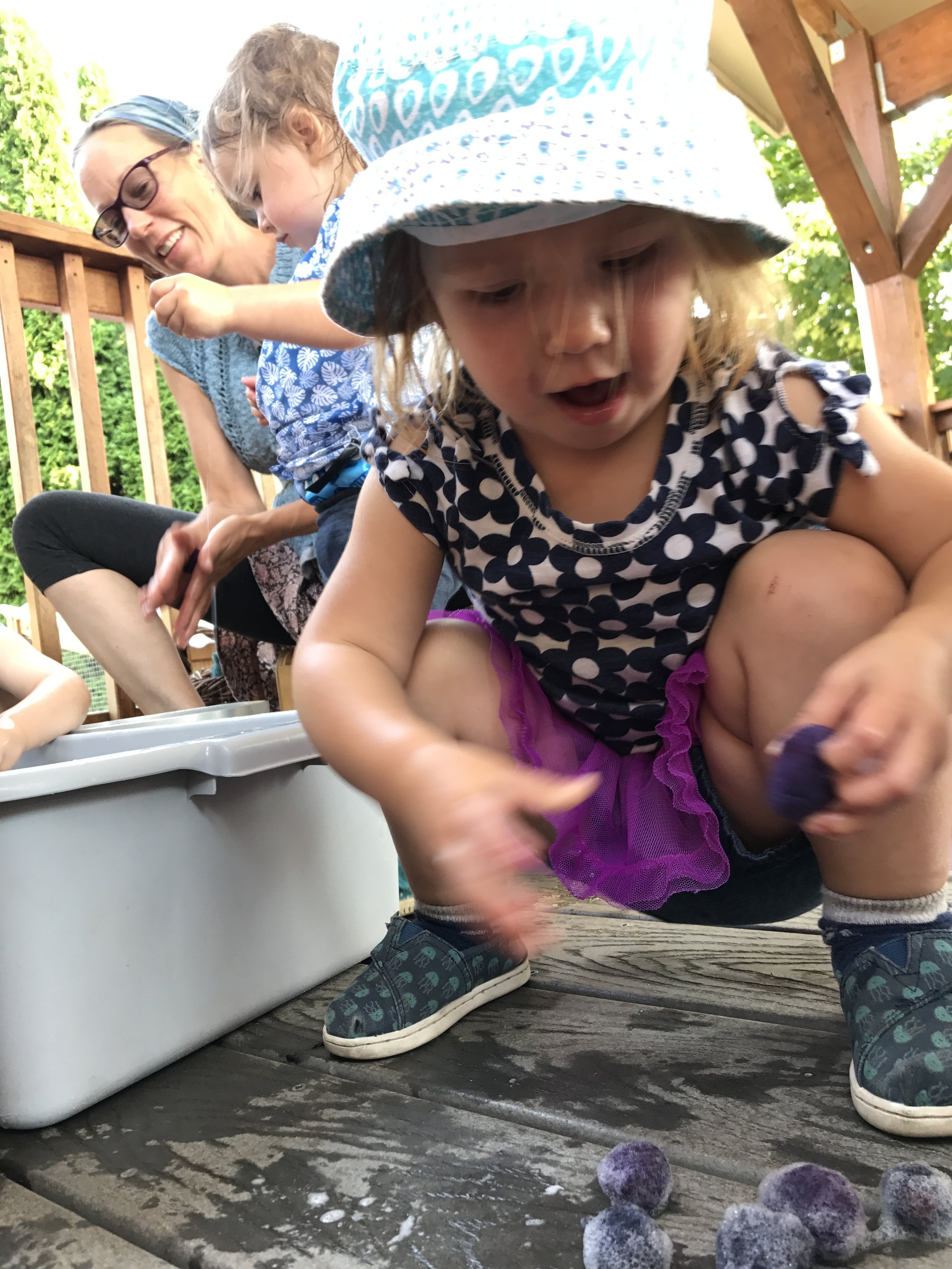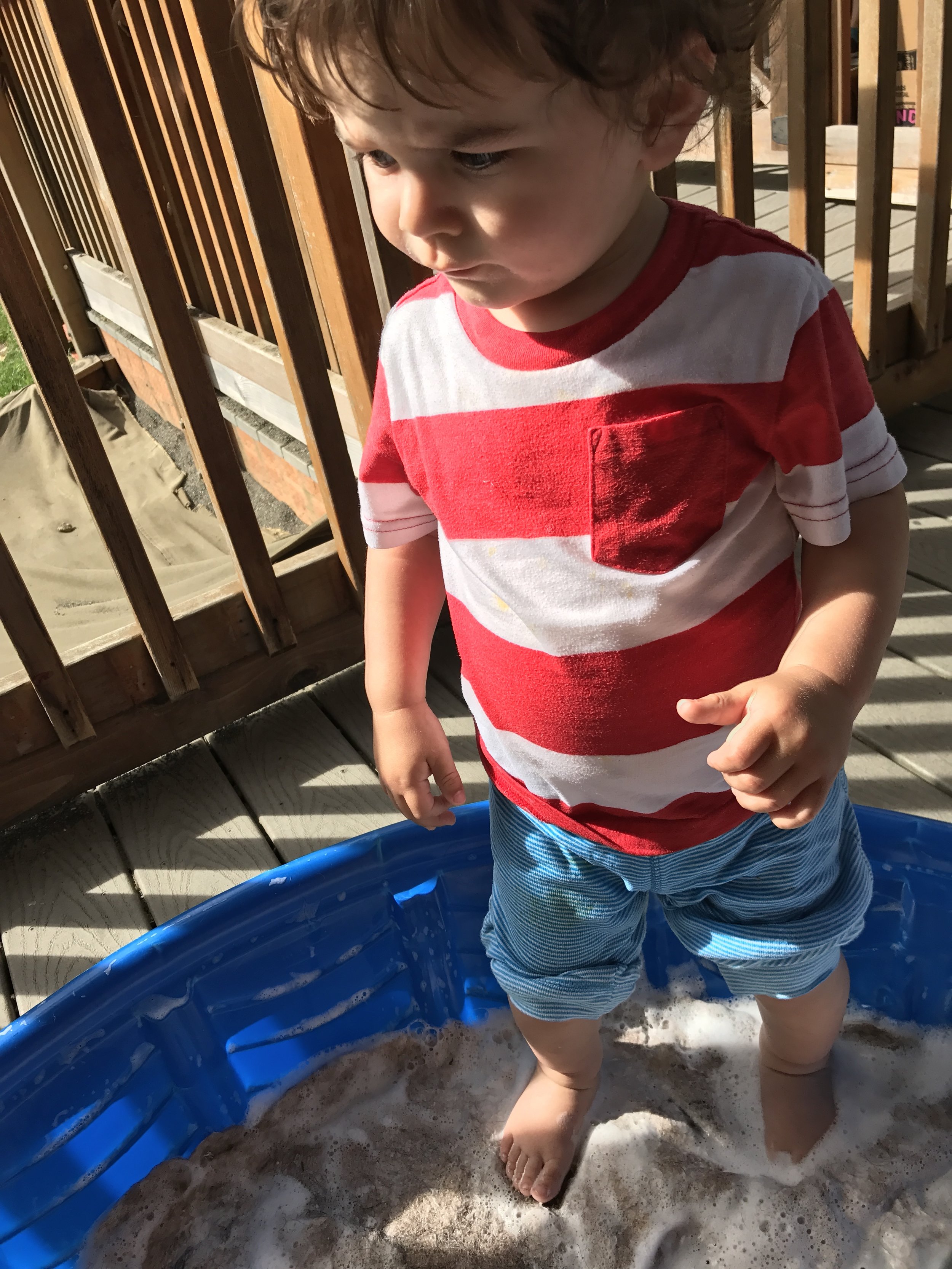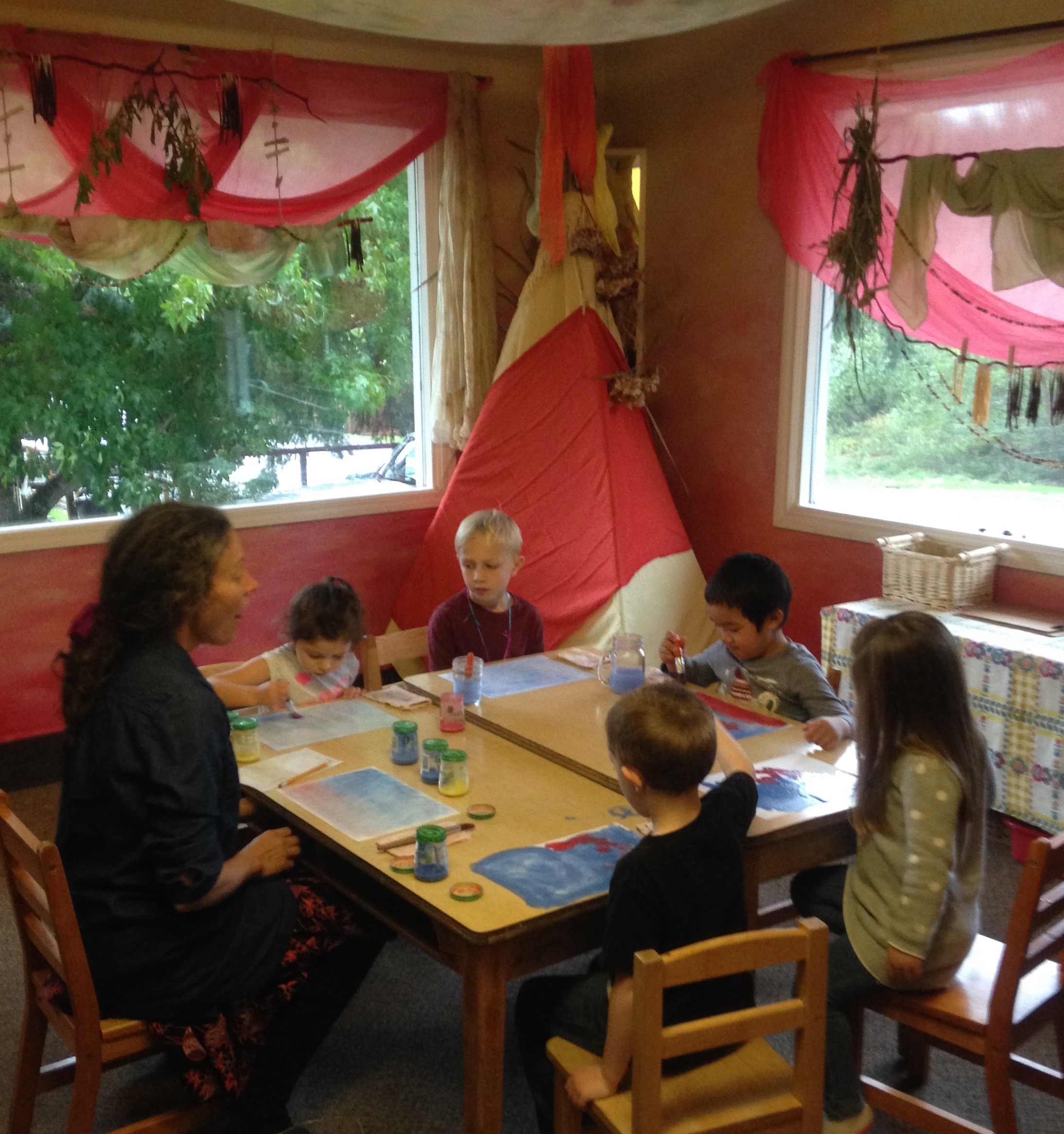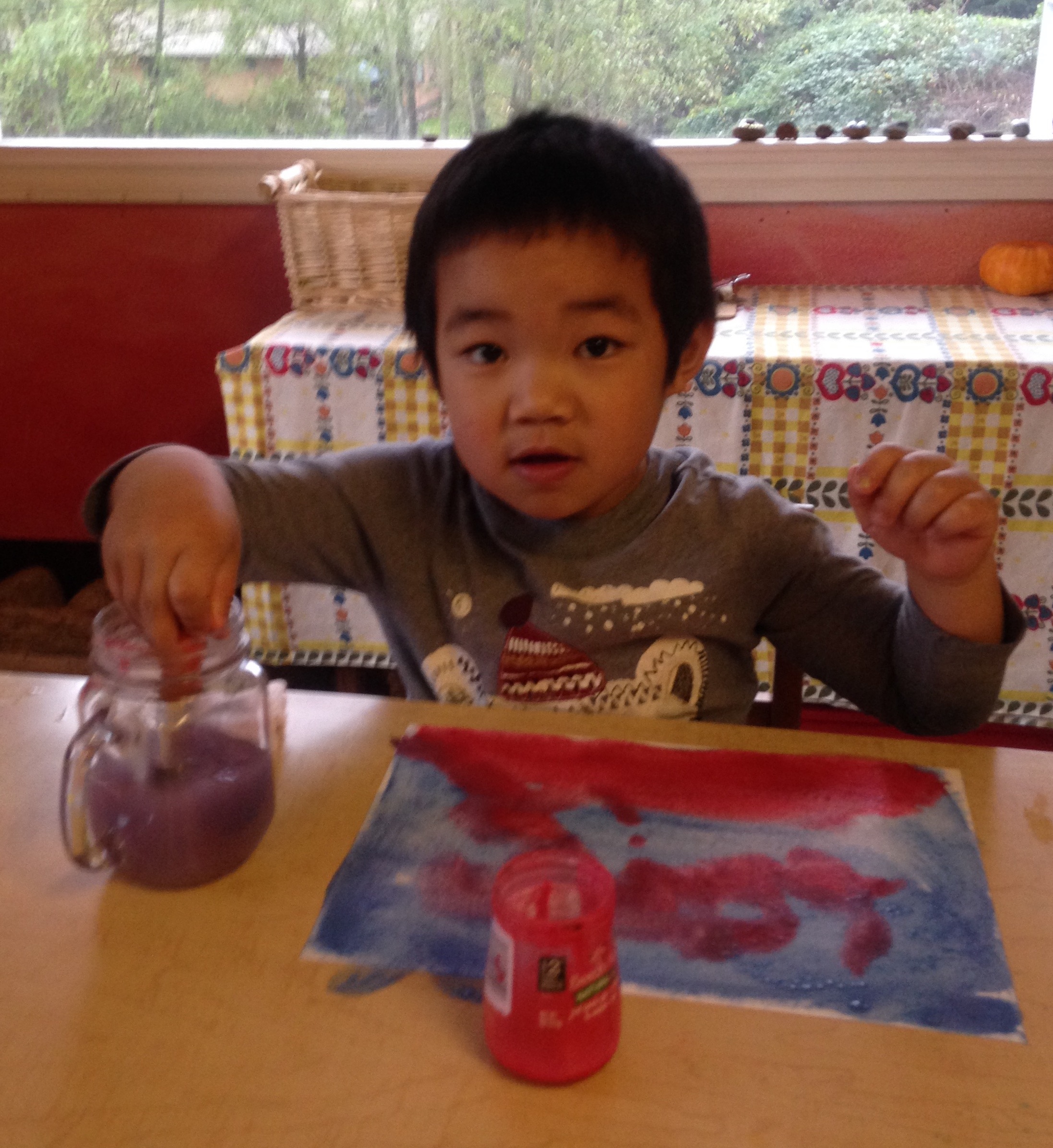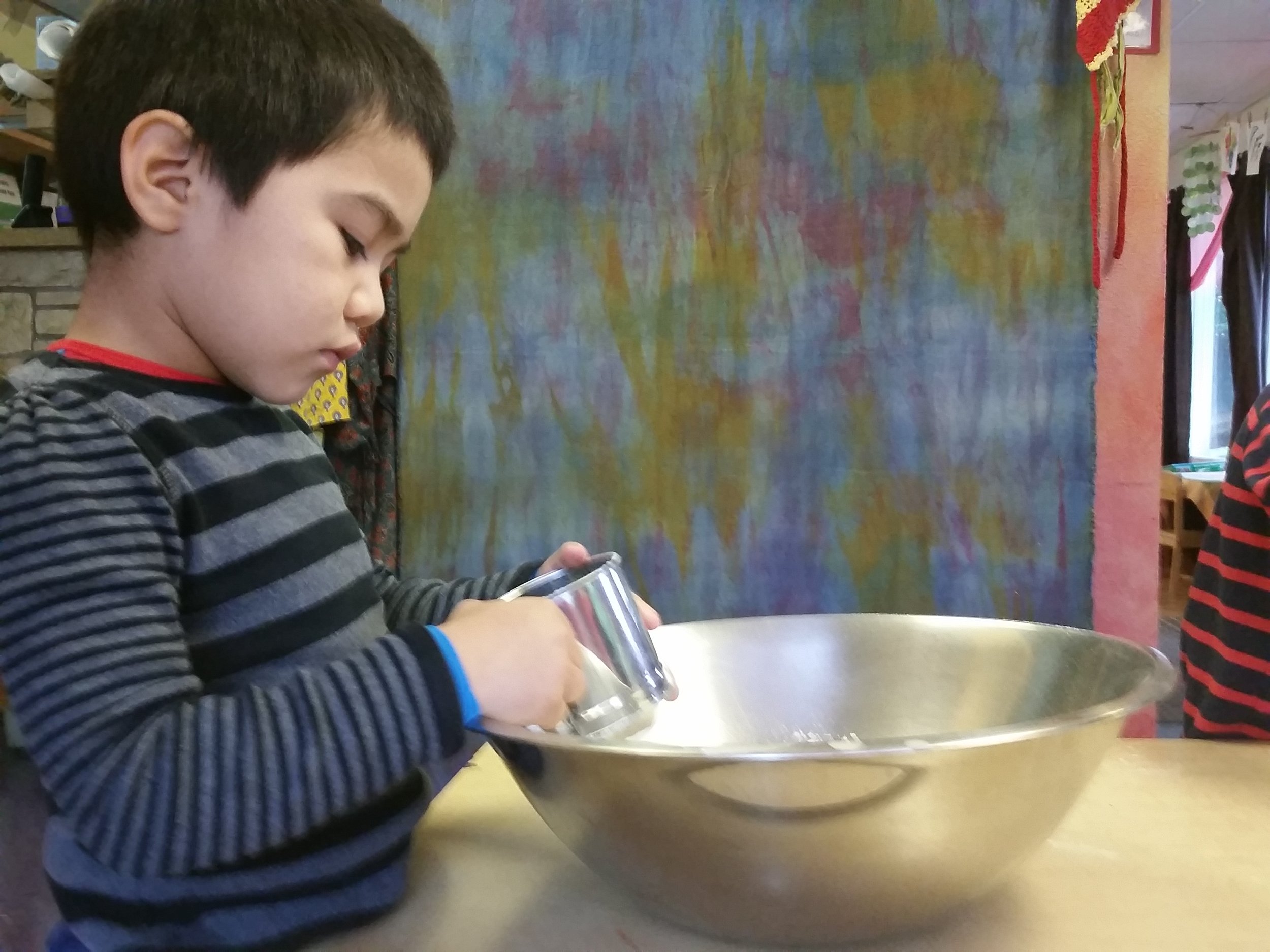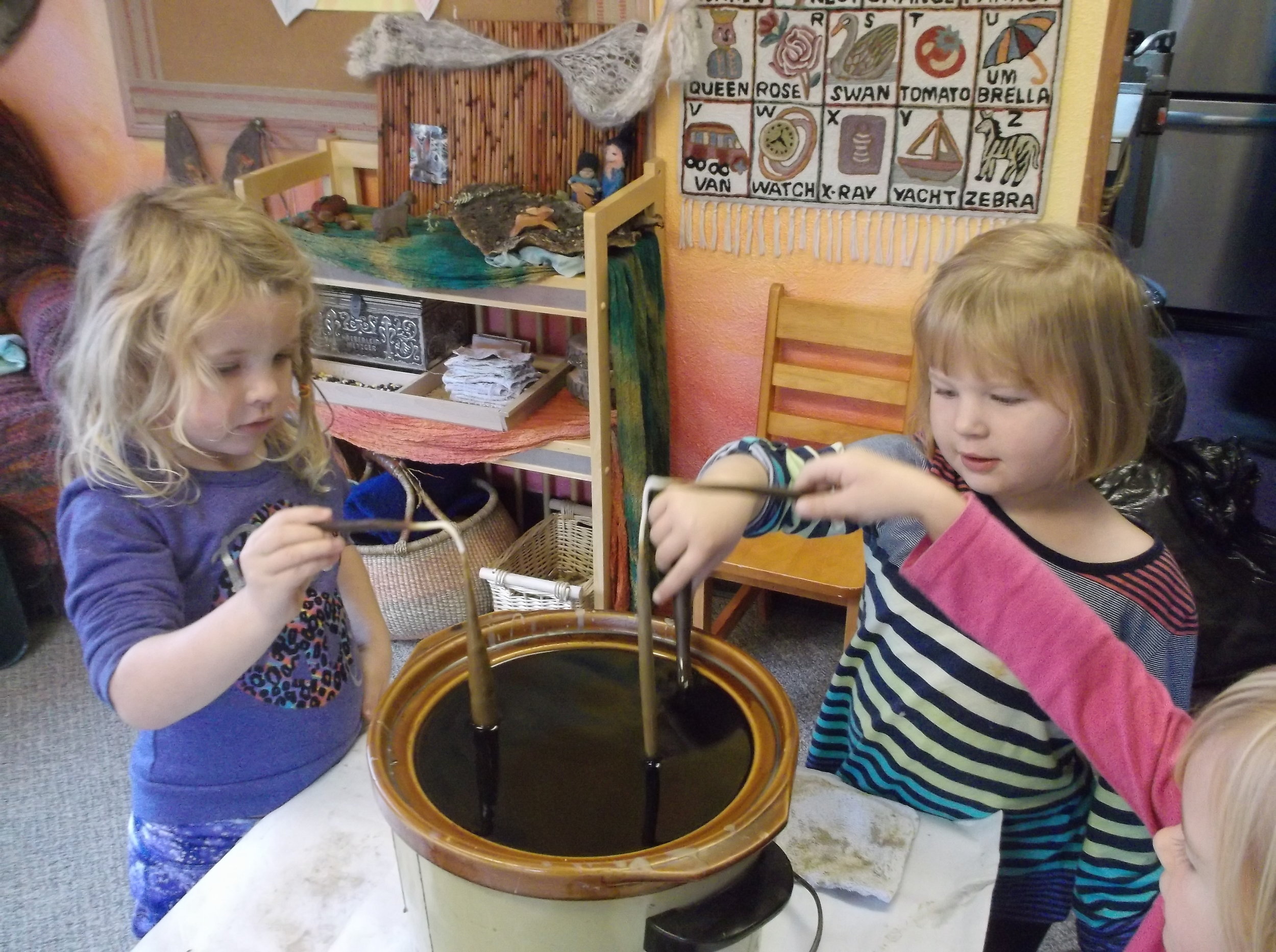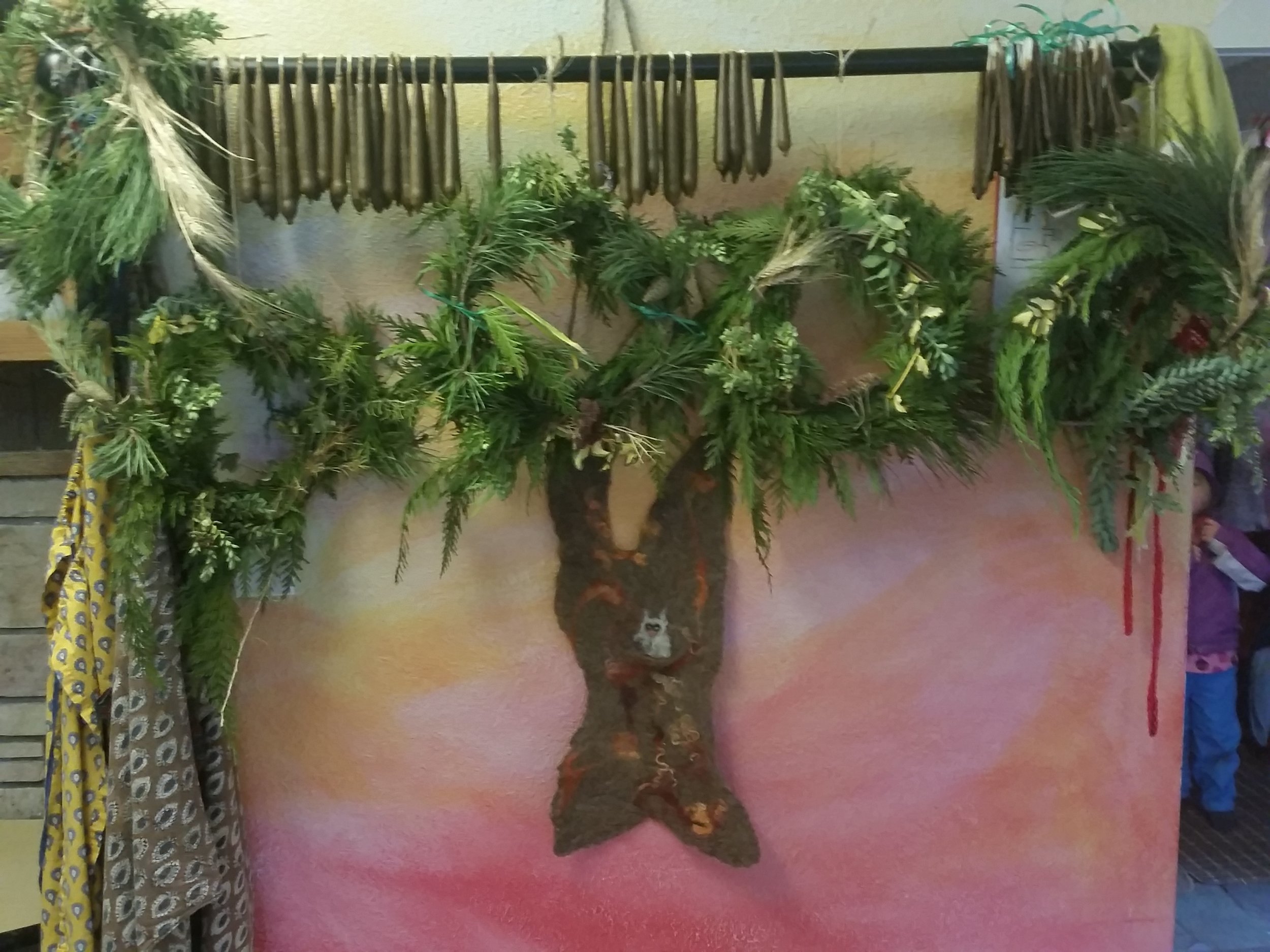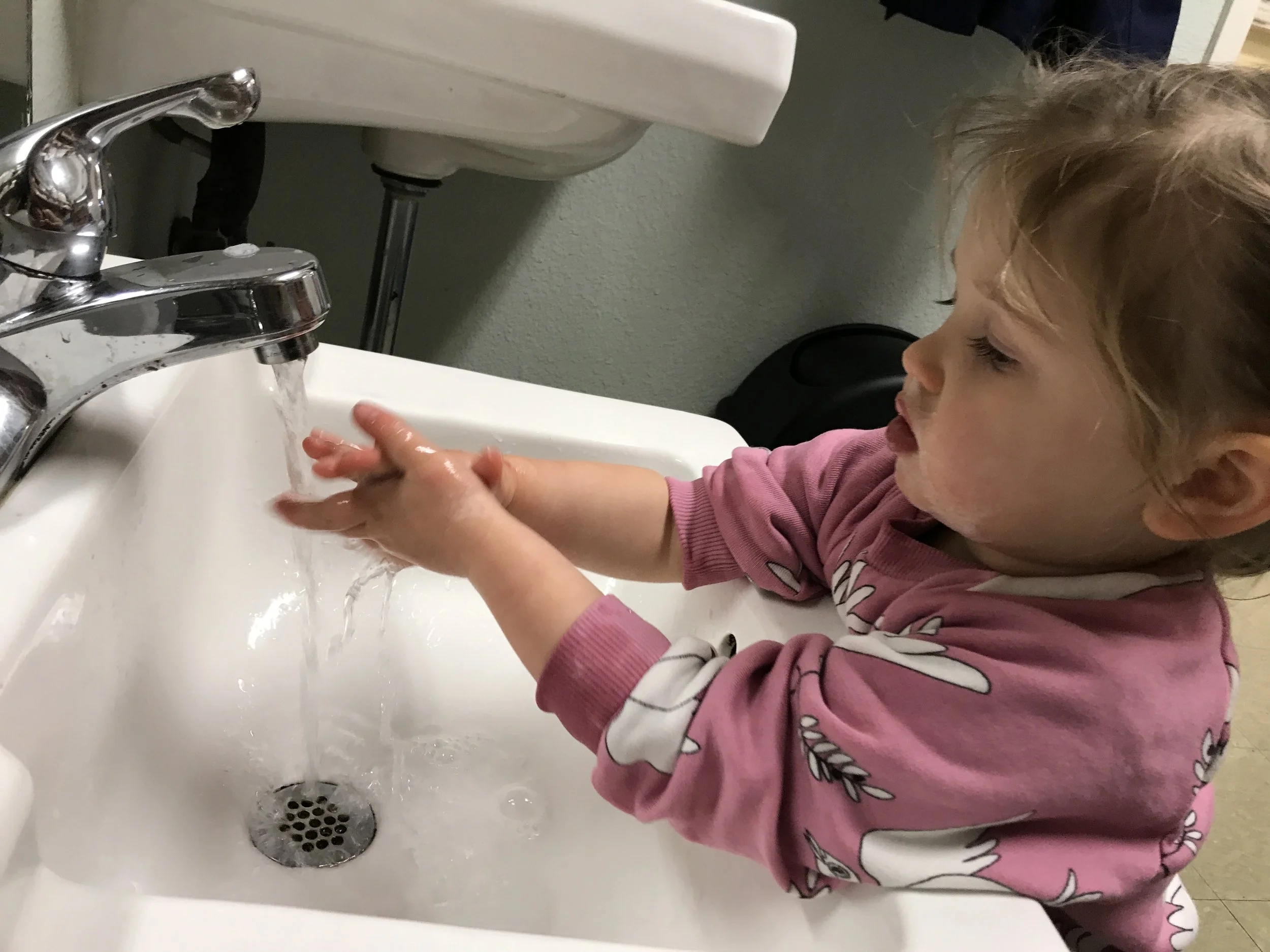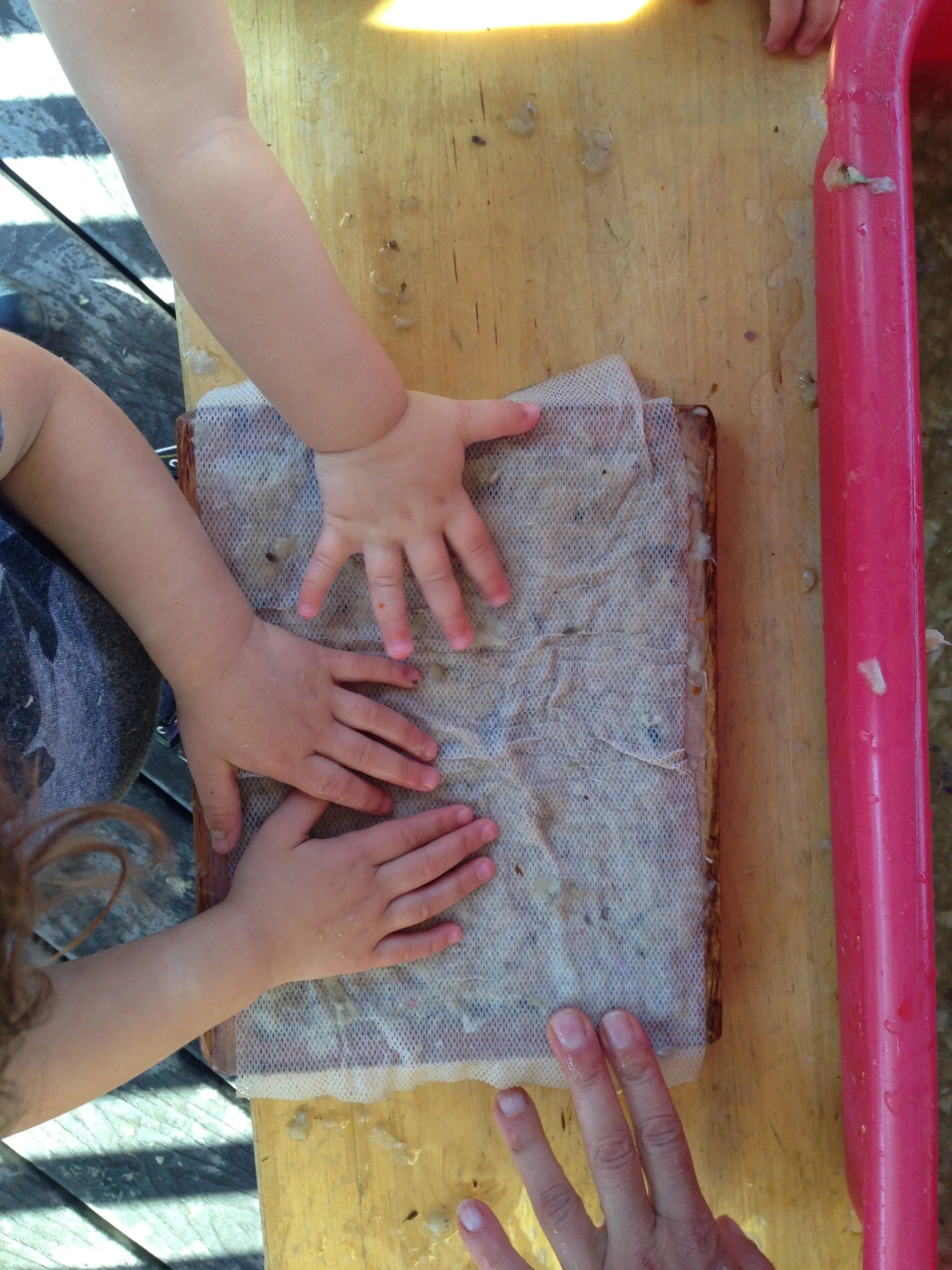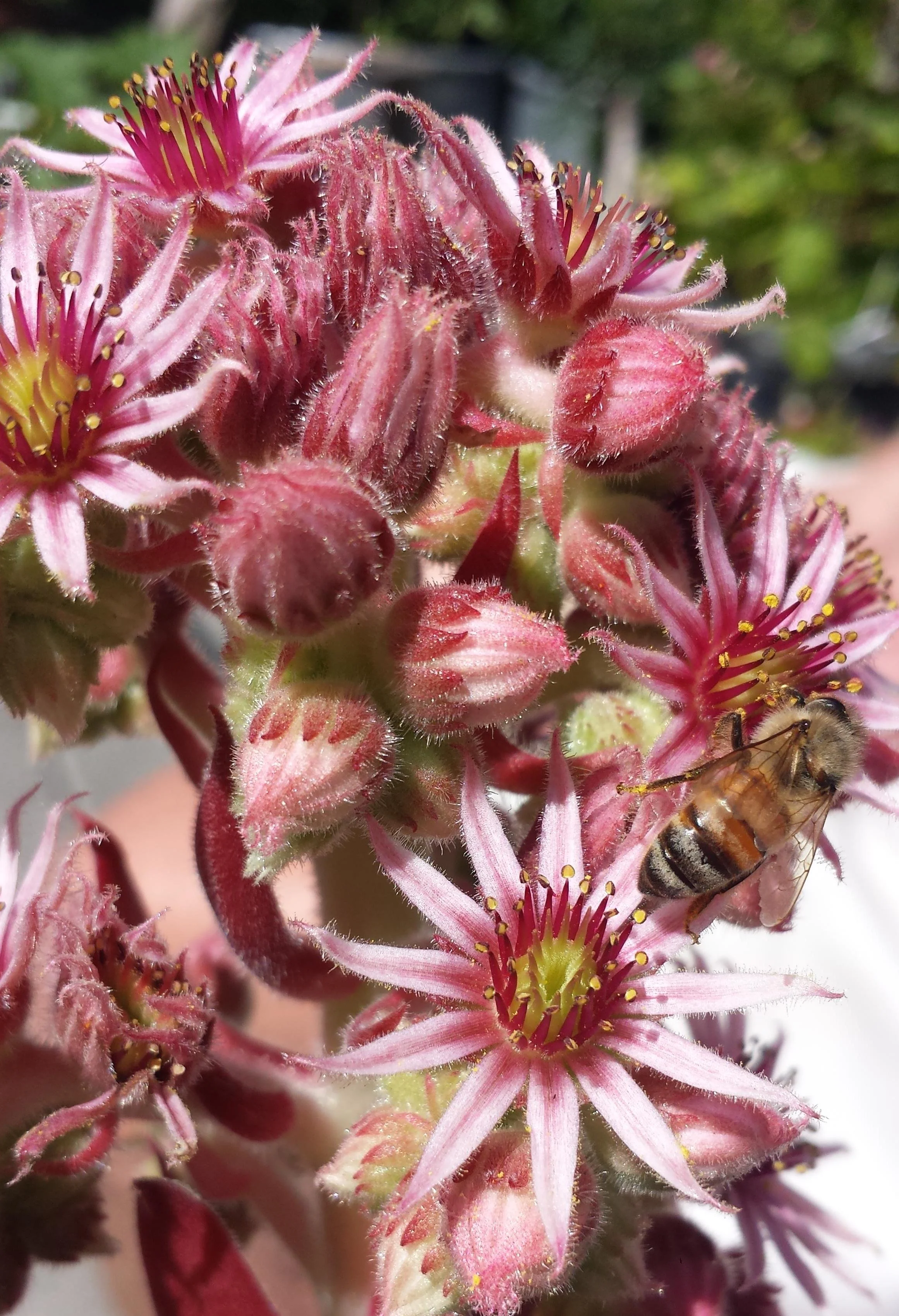“Too many schools place a double burden on young children. First, they heighten their stress by demanding that they master material beyond their developmental level. Then they deprive children of their chief means of dealing with that stress— creative play.” -excerpt from The Alliance for Childhood
Now that’s magic! Running watercolor over a crayon resist reveals the leaf—previously invisible.
The Alliance for Childhood is: “A nonprofit partnership of educators, health professionals, and other advocates for children who are concerned about the decline in children’s health and well-being and who share a sense that childhood itself is endangered. The Alliance was founded in 1999 and is incorporated in the state of Maryland. It is funded entirely by grants and donations from individuals, foundations, and businesses. The Alliance promotes policies and practices that support children’s healthy development, love of learning, and joy in living. Our public education campaigns bring to light both the promise and the vulnerability of childhood. We act for the sake of the children themselves and for a more just, democratic, and ecologically responsible future.
The Alliance’s campaign to restore play to kindergartens and preschools is supported by an advisory board of distinguished educators and health professionals.
Some of their recommendations include:
Consider whether the learning objectives in place for children are causing typically developing children to develop behaviors that are wrongly identified as disorder or learning disabilities.
Evaluate what hinders play: unsafe neighborhoods, over scheduled activities, screen time, homework that exists to support exam driven curriculum.
And Blossom would add:
Take some time to volunteer in your child’s kindergarten classroom. This is a natural way to understand the classroom expectations, giving insight into how to help your child make the transition into this new setting. Try to make sure this time is near lunch and recess so you can help with this busy time.
Ensure you understand the school’s Social Emotional Learning (SEL) curriculum, and use the same language and problem solving strategies at home. For example, if in the Bellingham Public School District, familiarize yourselves with Kelso’s Choices and the Zones of Regulation.
Be cautious of over-scheduling your child doing the first three months of school. Children are exhausted from adjusting to so many changes in their day.
For more information: Visit: www.allianceforchildhood.org , of particular interest “Crisis in the Kindergarten” by Edward Miller and Joan Almon / Watch: Ken Robinson. “Do Schools Kill Creativity?” TED talk, 2006 / Read:
The Importance of Being Little, What Young Children Really Need from Grownups by Erika Christakis . Penguin Books, 2016.
Last Child in the Woods by Richard Louv. Workman Publishing Company, 2005.
The Hurried Child by David Elkind. Originally published in 1981 but still very pertinent.
